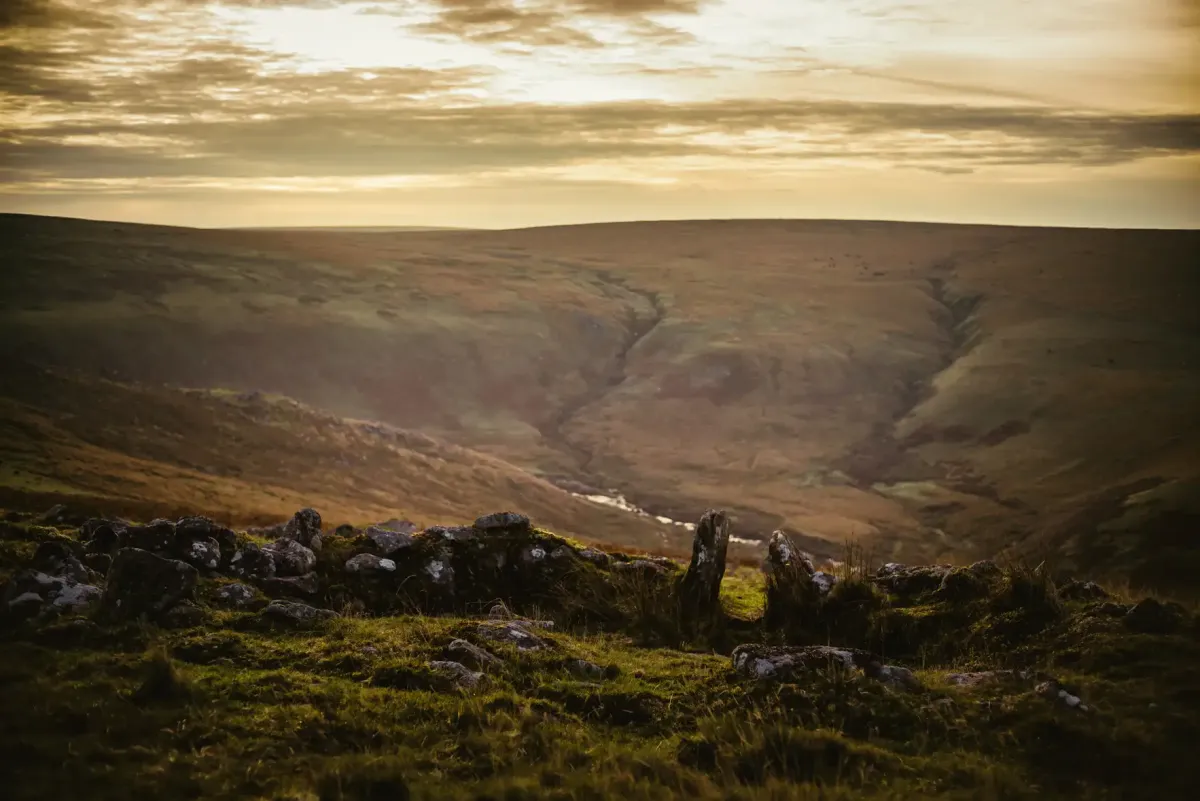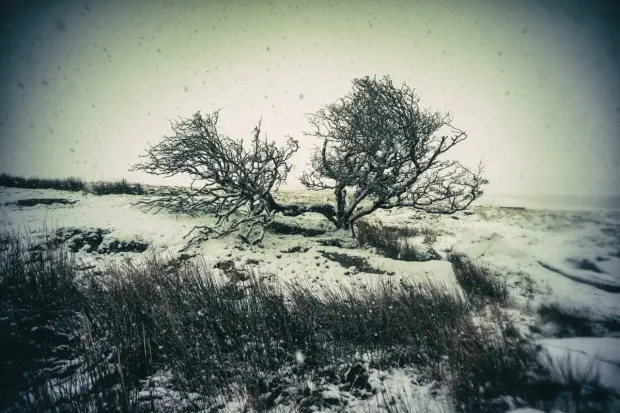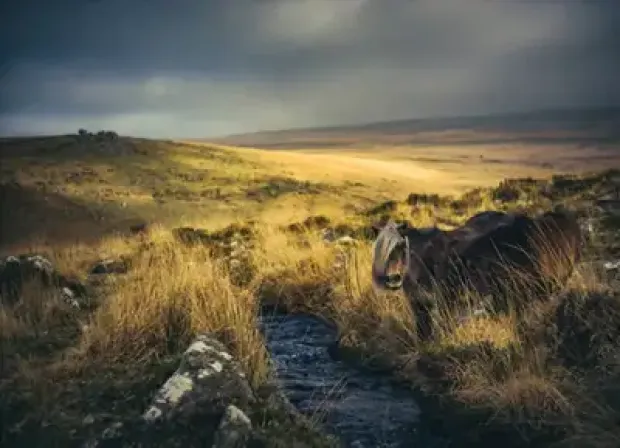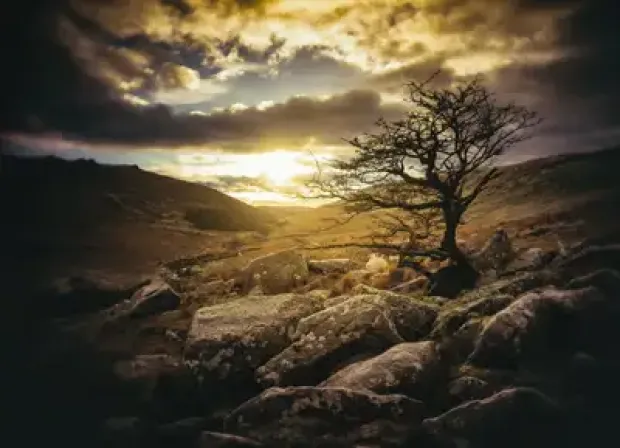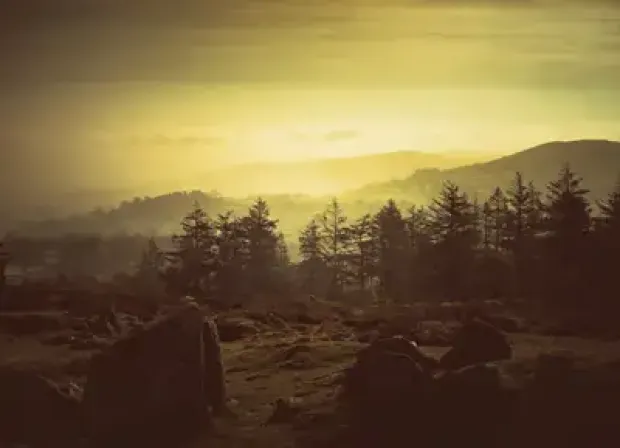Most visitors to Dartmoor National Park are aware that it is a landscape full of human history. The most impressive hut circles and stone rows cause many walkers to pause in wonder at these relics which, by the lack of knowledge we have in them, emanate a certain mythical mystery. Yet it is quite easy to walk past the many prehistoric hut circles and reaves without paying them more than a cursory glance - if they are even noticed at all.
To my mind, how people lived on prehistoric Dartmoor is perhaps more fascinating than ideas about their beliefs through alignment of stone rows or the different types of burials. Standing between the door jams of a Bronze Age roundhouse enables one to take in the view the farmer will have awoken to each morning (allowing for changes in the landscape, of course), and one can follow reaves for miles and puzzle over prehistoric land division.
Many prehistoric enclosures and huts don’t appear on the maps and most of the field networks are much more extensive than the OS map shows, allowing some to be discovered by the curious walker. It can be something of an adventure to find unmarked features which many will have walked by without even knowing they were there. Unfortunately, unmarked roundhouses are often extremely ruinous, and the walls are frequently little more than vague circular humps on the grass: it can take some practice to spot them but it is somewhat rewarding to find something that doesn’t appear on the map and in some cases have perhaps gone completely unnoticed - Sittaford Stone Circle was only discovered in 2007, but should you visit it now you might wonder how it could have been missed for so long.
Sadly, many of these features are becoming damaged: I have found more than one stone campfire built in proximity to archaeology and potentially using stone from the sites. I’ve seen a pit dug in the centre of a hut circle: possibly the work of detectorists, although I’m not sure what they’d hope to find in the acidic soil after a few thousand years.
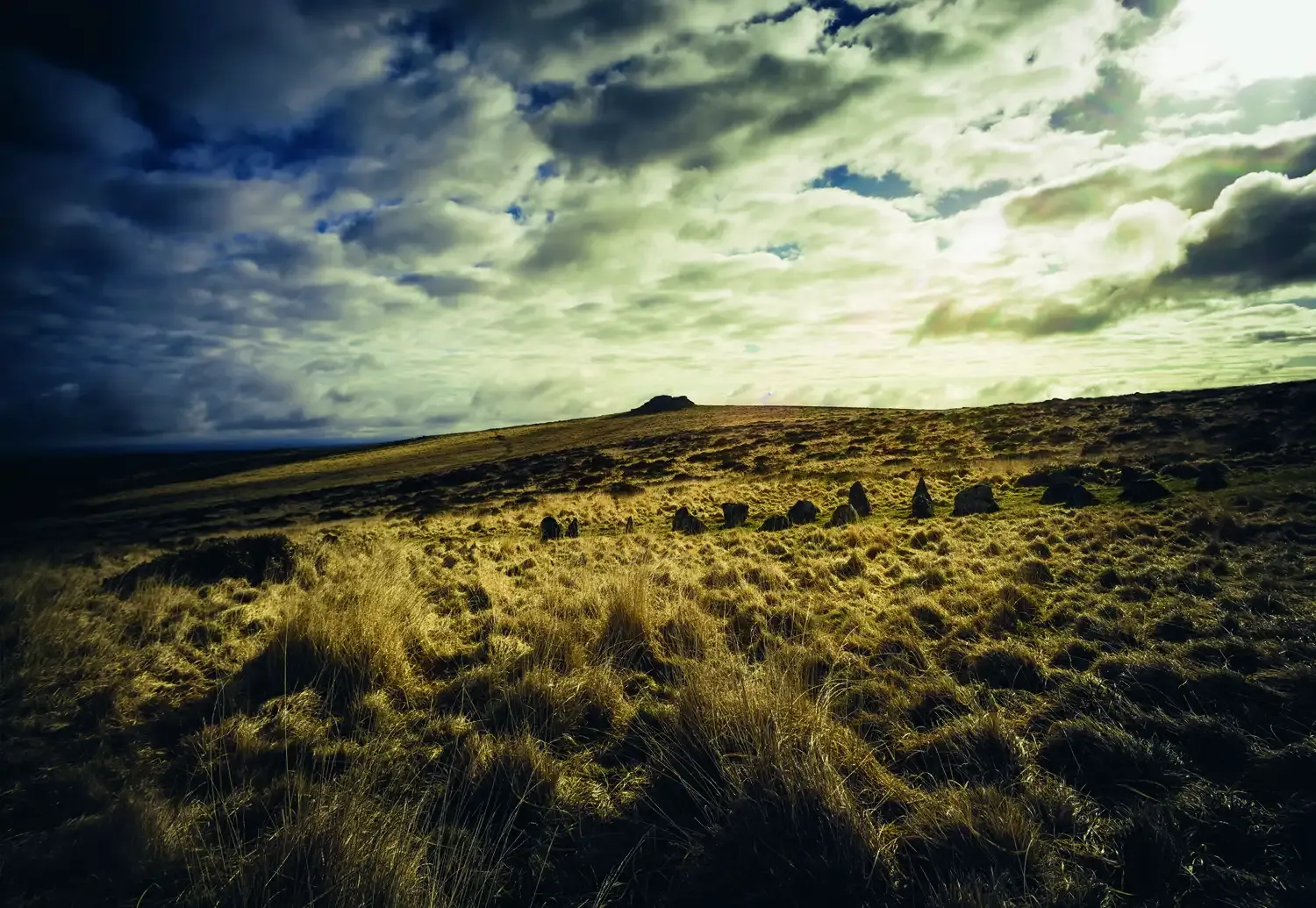
Worst of all, in early 2021, I found a stone had been pulled out from one of the stone rows near Sharpitor. Luckily, the stone was not far away and I was able to put in back in the exposed socket before emailing Dartmoor archaeologist, Dr Lee Bray. Its removal probably had something to do with the nearby snowman, but if he knew anything he wasn’t talking.
I suspect the perpetrators are often unaware of the damage they cause, but archaeologists date stone rows through pollen found in the soil under the stones: if all the stones in this rather small double stone row were to be similarly disturbed, it would be potentially impossible for archaeologists to glean anything from them.
It is difficult to protect these sites, particularly as many could be adversely affected or even lost through the rewetting of Dartmoor, changes to the climate, and the increase of bracken on the moor. Perhaps some of these places should be enjoyed while they still can be. Over the last couple of years, I have been photographing every prehistoric feature I can find on the moor. For a long time it was just a nerdy way of adding objectives to walks where others might do letterboxing or geocaching, but I’ve recently decided to create an explorer’s guide to prehistoric Dartmoor not an expansive record like Butler’s Dartmoor Atlas of Antiquities, but something which people who are not familiar with the archaeology can use as a springboard for their own discovery. It’s still in very early stages, and perhaps there won’t be much interest in it – but as with all my writing projects, it keeps me out of trouble.
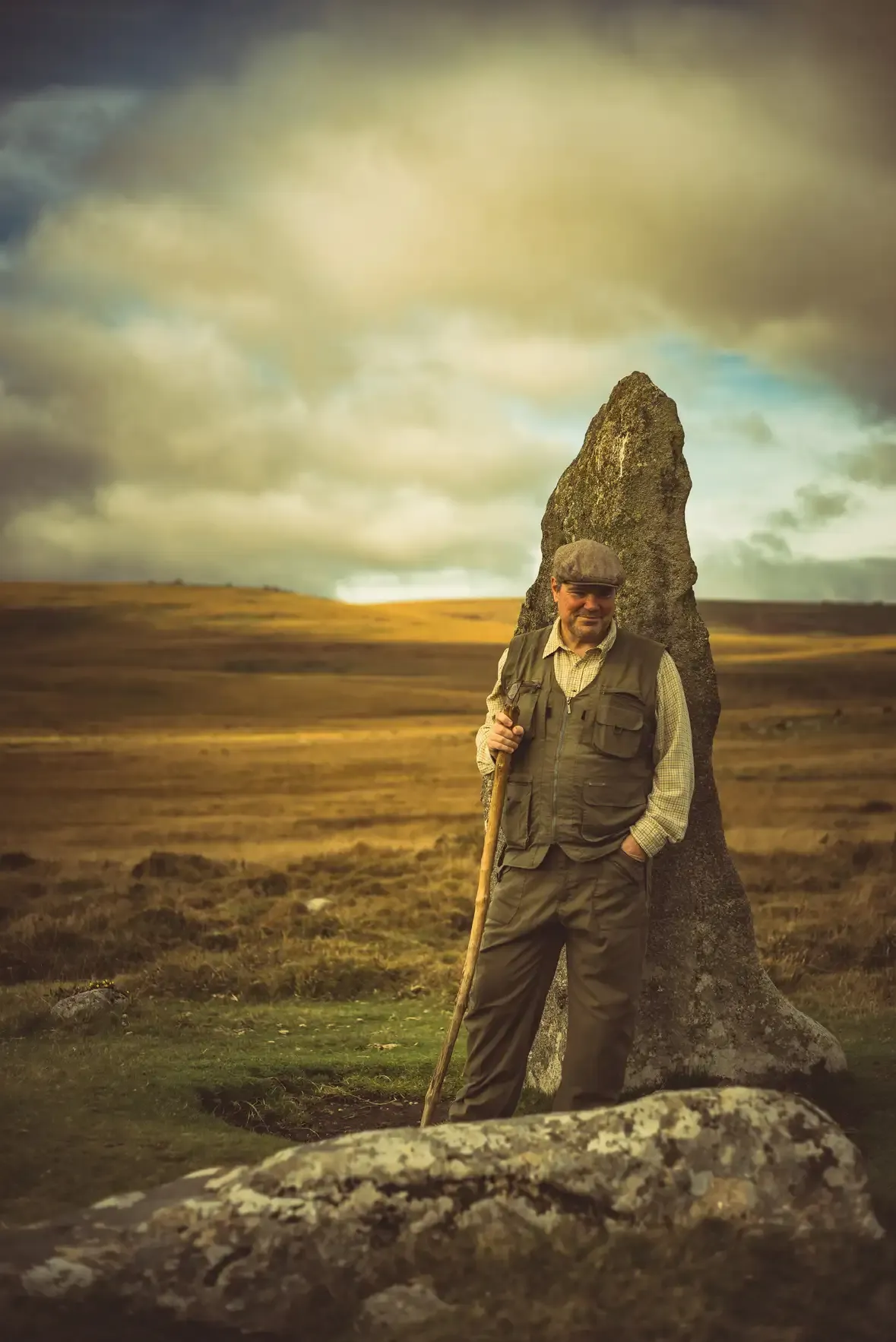
Andrew Mcauley
Andrew is a writer, a medieval re-enactor, amateur historian, geek.
He is the author of Dartmoor-based historical fiction novel 'The Sampford Slaying'
He is also a thoroughly great bloke - I've had the pleasure of walking with him on several occasions and hope to do so again soon.
This article was originally written for the predecessor of this website, it's namesake ... a zine called "Our Dartmoor"
